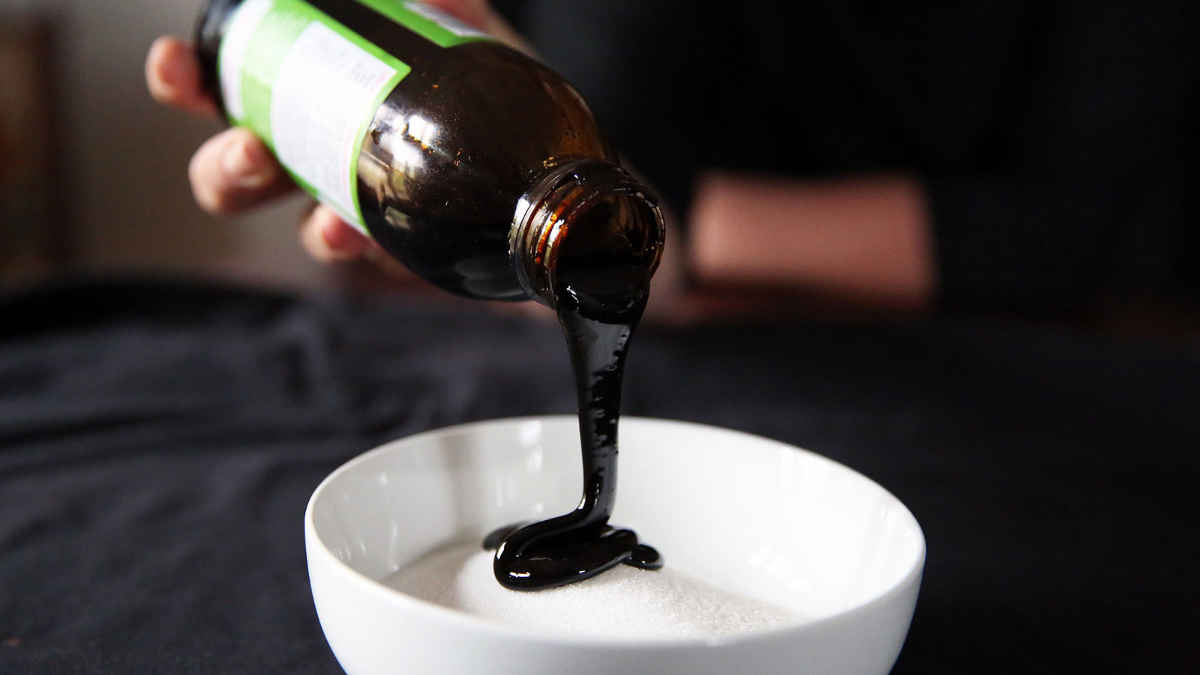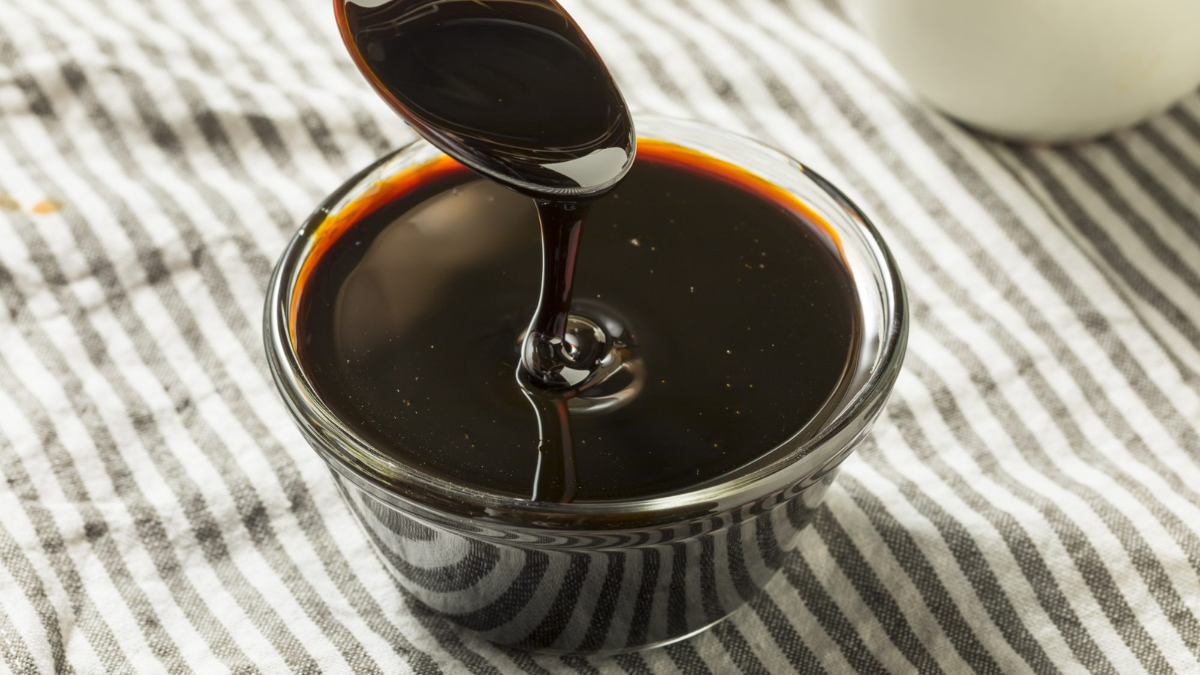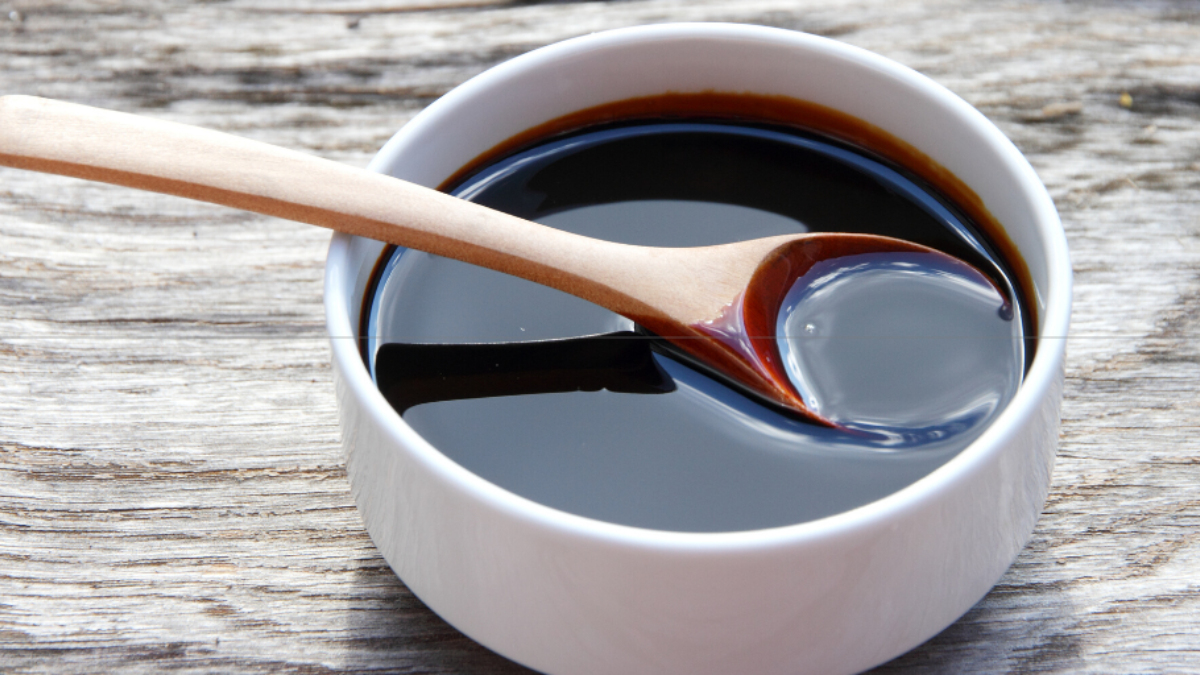The dark, sweet, syrupy residue is produced when sugars from sugarcane and sugar beets are extracted, known as molasses. Molasses has a long history in the Caribbean and the Southern United States, where sugarcane and sugar beets are intensively grown. Though it’s used less frequently today, it was a highly well-liked sweetener in the United States around the beginning of the 20th century. Molasses is used in baked delicacies for the holidays, such as gingerbread, baked beans, barbecue sauce, and other foods that benefit from its rich sweetness. Molasses is ideal for traditional recipes.
Despite not being as sweet as sugar, molasses is frequently used in cooking due to its robust flavor. Sugar cane and sugar beet molasses are not interchangeable since they have different tastes and textures. In the United States, sugar cane molasses is mostly used to flavor and sweeten meals (it also gives brown sugar its brown color). Unlike sugar beet molasses, which is mostly utilized for animal feed and other commercial purposes since it is not particularly sweet.
Molasses Nutrition Facts
What is Molasses?
The juice from sugarcane or sugar beets is heated until the sugars crystallize and precipitate during the sugar-making process. Molasses is the term for the syrup that is still present after crystallization. To extract as much sugar as possible, sugar cane juice typically undergoes three cycles of boiling and crystallization. The amount of sugar in the residual molasses decreases with each cycle. Depending on the kind or degree of sugar extraction, molasses can differ in variety and color, sweetness, and nutritional value.
Taste
Molasses typically has a warm, sweet, slightly smokey flavor. Light molasses has the mildest flavor, whereas blackstrap molasses is significantly less sweet and has a pronounced bitterness. Dark and medium molasses have a highly powerful flavor.
Each time the sugar juice is boiled down in the process of making sugar, a different kind of molasses is produced.
- Light Molasses: This is the syrup left over after the first boiling cycle of sugarcane juice. It is the lightest color, has the highest sugar content, and has the least dense texture.
- Dark or Medium Molasses: Produced as a byproduct of the second boiling cycle of sugarcane. This molasses is darker and denser than light molasses and contains less sugar.
- Blackstrap Molasses: This is the final byproduct of the third boiling cycle in the sugar-making process. Blackstrap molasses has a very dark color, is extremely dense in texture, and, because it’s highly concentrated, it has a deep, spicy, almost bitter flavor. This variety contains the least sugar and has the highest concentration of vitamins and minerals.
In addition to the three varieties, each contains sulfured and unsulfured molasses. While sulfur serves as a preservative, it also saps the sweetness and sometimes leaves a little chemical aftertaste. Only young sugarcane typically needs this treatment. Since mature sugarcane is rarely sulfured, its molasses usually has a lighter, cleaner sugar flavor. Molasses storage is not a major concern because even unsulfured molasses keeps for several years in the cupboard.
What are the Uses of Molasses?
Both light and dark molasses can be used in various cuisines, from sweet to savory. Molasses thickens barbecue sauce for meat like pulled pork and adds moisture and color to baked dishes like pecan pie. Other uses for molasses in cooking include:
- Syrup: In place of maple syrup, light molasses can be used to sprinkle over pancakes or to sweeten a bowl of oats.
- Baked Beans: Baked beans remain firm due to black molasses’ viscosity and high calcium content.
- Brown Sugar: White sugar and molasses are combined to make brown sugar. The brown sugar gets its color and wet, thick viscosity from molasses.
- Desserts: Molasses gives baked foods a moist texture. It is a component in desserts like pecan pie and gingerbread.
- Pumpernickel Bread: This black bread includes molasses, brown sugar, and chocolate powder, among its primary ingredients.
- Marinades: Molasses’ thick texture and sweet flavor go nicely with grilled meat.
- Rum: Rum frequently contains fermented and distilled sugar cane molasses.
Using of Molasses in Recipes
Here are two different types of recipes in which molasses are used:
Molasses Gingerbread Cookies
Although they are typically consumed throughout the winter holidays, gingerbread cookies are a traditional molasses recipe. Brown sugar and softened butter should be thoroughly combined. Beat in an egg, a vanilla bean, and half a cup of molasses. Mix the flour, baking soda, baking powder, salt, ginger, cinnamon, and cloves in a separate dish.
The molasses bowl should be mixed with the dry ingredients. When the dough comes together, divide it into two or three balls, shape them, wrap them in plastic, and place them in the refrigerator for at least an hour. Roll out the dough on a floured surface until it is barely a quarter-inch thick. Cut the shapes from the dough using a cookie cutter shaped like a gingerbread person. They should be baked on a buttered pan for 8 to 10 minutes at 350 °F. Let cool and, if wanted, decorate with icing.
Barbecue Sauce
The ideal molasses for this traditional southern sauce is dark. Blackstrap molasses is even occasionally added to barbecue sauce. Depending on how spicy you want your sauce to be, combine molasses, ketchup, brown sugar, apple cider vinegar, vegetable oil, minced garlic, salt, and pepper in a bowl. Either warm up and boil all the ingredients together in a pan. Use the combination to make a sweet pulled pork that will break apart after eight hours in a slow cooker with a four-pound chunk of pork butt, or consume it as a sauce for cooked meat.
Is Molasses a Natural or Added Sugar?
Molasses is made from natural plant sources, but because it is added to meals and beverages that did not already include it (either during production or home preparation), it is still considered an added sugar. Sugars are present in whole plant meals like fruits and vegetables. These sugars are categorized as natural sugars.
Compared to other liquid sugars like honey and agave syrup, molasses has a similar amount of calories (about 60) and total sugars (approximately 15 grams) per tablespoon. Still, it also contains additional minerals, including calcium, iron, magnesium, and potassium. Due to further processing, blackstrap molasses is more concentrated than conventional molasses and has a higher vitamin and mineral value. It also has a lower sugar level.
Although molasses may appear healthier, expert recommendations for molasses consumption are the same as those for other forms of added sugar. Although added sugar consumption has decreased in the United States over the past few decades, six out of ten Americans still consume more added sugar than is healthy. Regardless of the source or kind of added sugars, the current Dietary Guidelines for Americans advise taking no more than 10% of calories from added sugars.
How Healthy is Molasses?
While molasses is an added sugar that should be used sparingly, its micronutrient content has some advantages over regular table sugar in terms of health.
Lowers Blood Pressure
Molasses is a wonderful source of potassium, which is believed to help lower blood pressure. Molasses contains more potassium than white sugar does. 13% of your daily needs, or 293 milligrams, are met by one tablespoon of potassium. To meet your potassium needs, it is not advised to drink excessive amounts of molasses. A well-balanced diet will enable you to meet your daily needs effortlessly.
Aids Immunity
The zinc found in molasses is known to support the function of T-lymphocytes and natural killer cells. Because molasses is fiber-free, its zinc and other minerals are more readily absorbed, even though most people won’t (and shouldn’t) consume enough of it to meet their daily zinc needs.
Also, remember that molasses is not a major source of zinc. One tablespoon of molasses contains 0.058 milligrams of zinc. The RDA for zinc for men is 11 mg, and for women, it is 8 mg. Accordingly, 0.5% of the RDA for men and 0.7% for women are in one tablespoon.
Reduces Risk of Osteoporosis
Osteoporosis is a bone-weakening condition that normally develops over time. By consuming various calcium-rich foods, you may be able to prevent osteoporosis, which is brought on by a calcium deficit. Forty-one milligrams of calcium are present in one spoonful of molasses. For people aged 19 to 50, the recommended daily amount (RDA) is 1000mg. Thus, a tablespoon helps you meet 4.1% of your daily calcium requirements. Additionally, healthy for bones is the zinc in molasses.
Supports Red Blood Cells
Iron is a crucial mineral for correctly synthesizing red blood cells to prevent iron deficiency anemia. Molasses can be an improved substitute for table sugar for vegetarians and vegans, helping to ensure higher iron intake to prevent deficiencies sometimes seen in these diets. Almost 1 milligram of iron, or 5% of the daily need, is in molasses per tablespoon.
Storage
Any molasses should be kept in the original container; to avoid sticking, clean the rim after each use before fastening the lid. The back of the pantry or a cabinet are good options for storage because they are cool, dry, and dark.
Avoid exposing it to heat or humidity, which can encourage mold and bacteria growth. Before using, let it warm to room temperature because chilly temperatures will cause it to thicken and become difficult to pour. You can keep it in the fridge if your kitchen becomes heated.
The shelf life of unopened molasses is one to two years beyond the “best by” date. Under the right circumstances, opened molasses can be kept for a year.
Before using, smell and taste the product if you’re unsure. It should be thrown if it develops unpleasant smells, discolored spots, or crystallization. If the open bottle has been sitting in your cupboard for a while, it might be prudent to replace it because the quality might decrease dramatically over time.
Conclusion
Although molasses may appear to be a sweet, gooey material, it provides a wealth of health advantages. The control of diabetes, acne and other skin conditions are just a few of the health advantages of molasses. It may also provide relief from menstruation-related issues. Additionally, it might sustain nervous system functionality, enhance bone health, and hasten wound healing. Molasses is frequently available year-round in the baking section of most supermarkets.
Although eating raw or pure molasses is safe, many people don’t find it tasty or convenient to do so on its own because it is so dense and sticky. People don’t typically eat molasses or use it as a condiment. However, it can be substituted for sugar in various baked goods recipes, including those for brownies and cookies. Some people like to sweeten and flavor hot drinks like tea with molasses, while others like to sprinkle light molasses over porridge to replace syrup or honey. Molasses is frequently used in marinades for grilled meat and baked beans.




